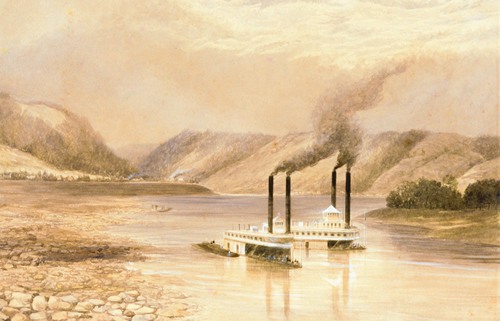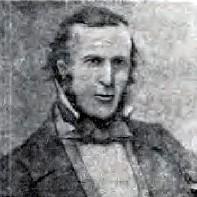



Lefevre James Cranstone was an English artist known for his watercolor genre-style landscapes and oil paintings. He visited the United States, where many of his works are displayed, and later moved to Australia.
Cranstone was the second of thirteen children born in Hemel Hempstead, England to Joseph, Jr. and Maria Lefevre Cranstone. In 1838 he enrolled in Henry Sass's School of Art in London and at age 18 was received as a probationer into the Royal Academy School on April 21, 1840. Following his formal training he exhibited a number of oil paintings in the annual exhibitions of the Royal Society of British Artists in Suffolk Street and at the Royal Academy. In addition to his watercolor and oil paintings, during his lifetime Cranstone also produced etchings and pen and ink and chalk drawings. He was also an art teacher in his wife Lillia's boarding school.
Despite exhibiting at prestigious institutions such as the Royal Academy, Cranstone did not achieve popular recognition in Britain, and he is best known for his prolific work in America. For a ten-month period in 1859 and 1860 Cranstone, with his younger brother Alfred, visited cousins in Virginia and Indiana. During this trip he prepared almost 300 pen and ink with wash sketches documenting both the rural and urban areas of antebellum America which they visited. Works include paintings of the Ohio River at Wheeling, West Virginia, the White House in Washington DC and the Courthouse in Colonial Williamsburg.
Sketches he made during his American visit became available for sale in 1928 and are in the collections of the Lilly Library at Indiana University in Bloomington. In 1933 a collection of 98 larger watercolor versions of a representative number of the sketches were sold at auction. One of these was the oil painting, Slave Auction, Virginia, which hangs in the Virginia Museum of History & Culture in Richmond, Virginia. Donald L. Smith's biography of Cranstone contains a facsimile of this painting along with a letter dated December 29, 1860, that Cranstone wrote to the Hemel Hempstead Gazette, stating his views on the election of Abraham Lincoln as President of the United States, denouncing the brutality of slavery and describing in detail the horrors of a slave auction in Richmond, Virginia.
Cranstone's paintings are in the art collections of the White House; the Metropolitan Museum of Art; the Museum of Fine Arts, Boston; the Virginia Historical Society; the Virginia Museum of Fine Arts; the Colonial Williamsburg Foundation; the Oglebay Institute Mansion Museum in Wheeling, West Virginia; the Dacorum Heritage Trust in Berkhamsted, England; and other institutions and private collections. An art collection he prepared in Australia, along with a volume of illustrated poetry verse brought with him from England, are at the John Oxley Library in Brisbane.
On July 19, 1882 Cranstone's wife, Lillia, died. Shortly afterwards, Cranstone and two of his children, Beatrice Lillia and Frederic George, joined his third son, William, now a medical doctor, and his new wife, Ellen Kent, in moving to the small town of Clermont, Queensland, Australia. Here, Cranstone continued his paintings of the local land and seascapes. In 1889 he moved with Beatrice to Brisbane where he continued drawing local subjects up to his death on June 22, 1893.

